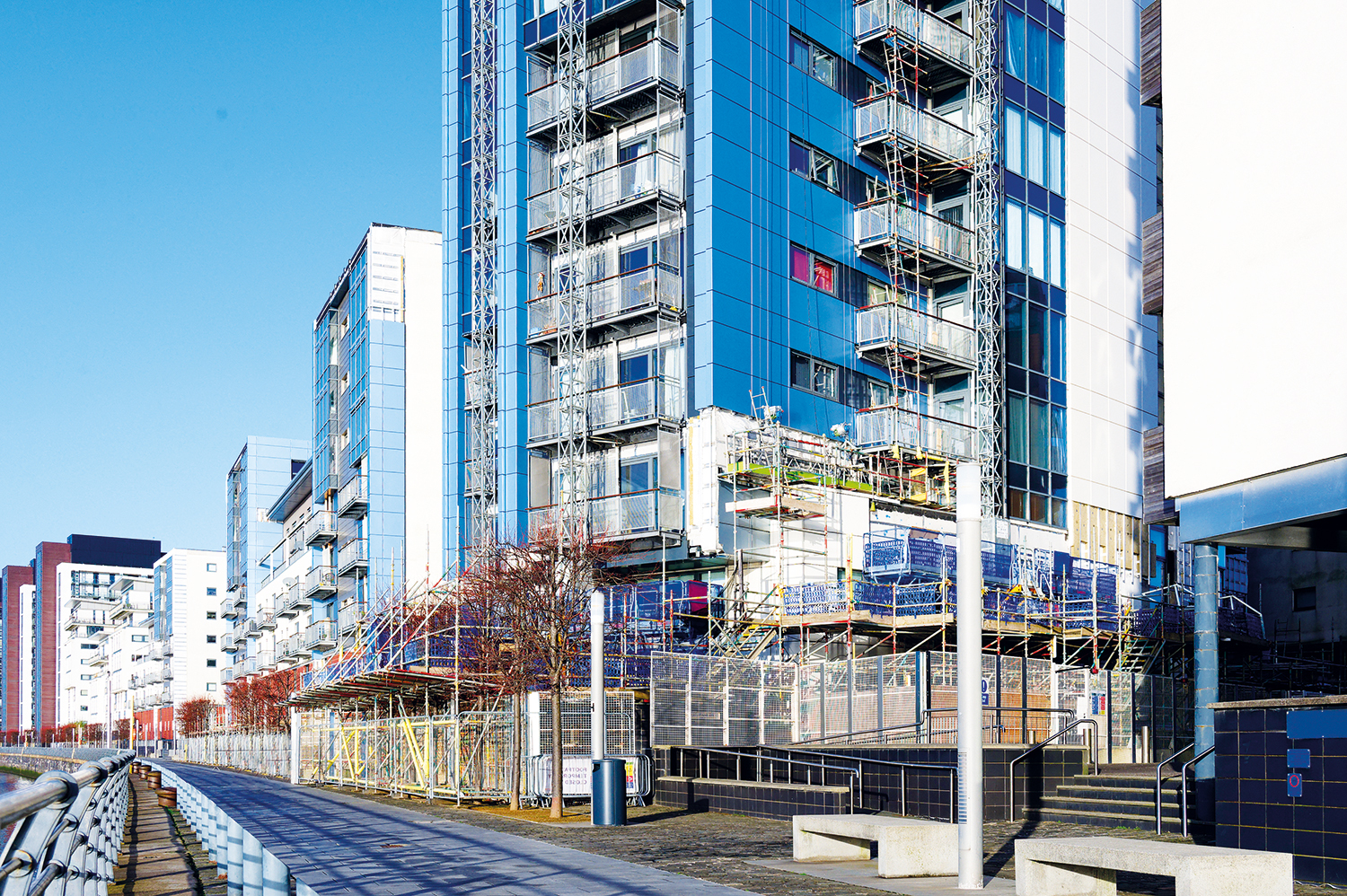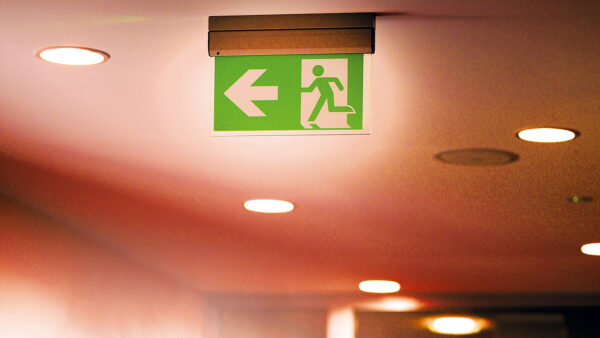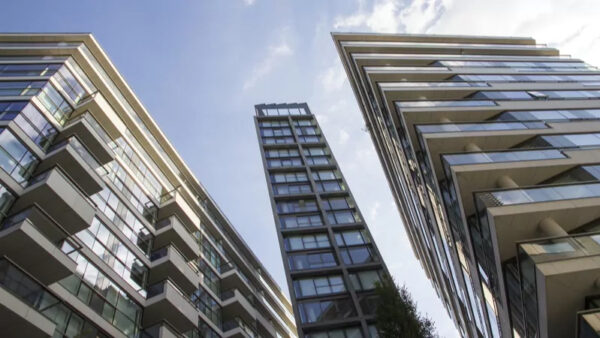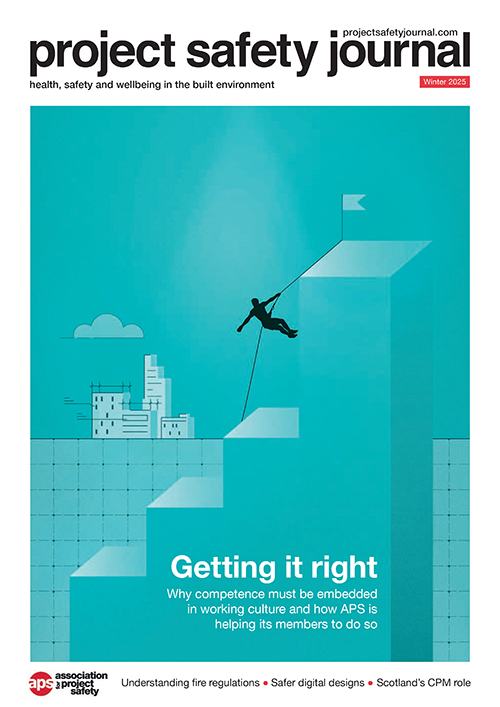
Lisa Dromgoole and Francesca Macmillan from international law firm Womble Bond Dickinson on new cladding legislation and other plans to enhance building safety in Scotland.
Progress to identify, assess and fix unsafe cladding on Scotland’s medium and high-rise multi-residential buildings will be accelerated, according to the Scottish government, which recently published its Housing (Cladding Remediation) (Scotland) Bill (the Bill).
The Bill has been introduced to the Scottish parliament as part of the 2023/2024 Programme for Government, with the aim of supporting the delivery of the Scottish cladding remediation programme and speeding up the remediation process.
The Bill’s explanatory note advises that all provisions are intended to contribute towards eliminating or mitigating the risks to human life that are created or exacerbated by the external wall cladding systems of buildings that are at least partly residential.
There are three key features of the Bill. These are covered in Parts 1, 2 and 4 of the Bill. (Part 3 covers individual liability where an organisation commits an offence and Part 5 addresses interpretation.)
1. Cladding Assurance Register
Part 1 of the Bill sets out that Scottish ministers are to create and maintain a register (Cladding Assurance Register) of information on buildings that have undergone a single building assessment (SBA).
2. New powers to arrange remedial works
Part 2 would allow the Scottish government to arrange for SBAs and remedial works to be carried out and to order evacuation of buildings where necessary. This part aims to combat the practical difficulties of obtaining owners’ consent.
3. Responsible Developers Scheme
Part 4 gives ministers the power to establish a scheme to support engagement with developers and encourage them to pay for, or carry out, remediation work. Potential sanctions for developers that are eligible but do not join or continue membership are also contained in this section of the Bill.
- Eligibility: The Bill prescribes that regulations must make membership of a scheme depend on (but not only on) a person being a developer and having a connection to a building of a kind described by the regulations that has problematic cladding.
- Sanctions: The Bill sets out the consequences of developers not being a member of this scheme:
– They would be on a ‘prohibited developers list’ – a published list of developers eligible for membership but which are not members.
– Regulations would be created that would prohibit such developers from carrying out any development or developments of a kind described in the regulations.
– Regulations would also prevent building warrants from being granted, or amended, on application by the developer and would require a verifier to reject any completion certificate submitted by the person.
– The maximum penalties in respect of offences created under this Bill would be a fine of up to £50,000.
Cladding measures in Scotland
The Bill is being introduced against the backdrop of various measures
that have already been implemented in relation to cladding in Scotland.
These initiatives aim to improve public safety following the Grenfell Tower fire in 2017. They include:
- Ministerial working groups: The Ministerial Working Group on Building and Fire Safety was created, followed by the Ministerial Working Group on Mortgage Lending and Cladding.
- Recent legislation: On 22 April 2022 the Scottish parliament passed legislation to ban combustible cladding on high-risk buildings, and the highest-risk metal composite cladding material from all buildings. This was implemented through amendments to the Building (Scotland) Regulations 2004 introduced on 1 June 2022.
- Scottish Safer Buildings Accord: Scottish ministers and a list of developers have committed to ensuring there are no high-risk combustible cladding systems on multi-occupancy high-rise residential buildings in Scotland.
- Single building assessments: SBAs were introduced in March 2021, through a pilot scheme for 25 buildings, following a recommendation of the Ministerial Working Group on Mortgage Lending and Cladding for multi-occupancy residential buildings with cladding on their external walls.
- Register of buildings: A register is being created at the recommendation of the Ministerial Working Group on Mortgage Lending and Cladding. It will contain details of buildings assessed through an SBA and remediated to an agreed and consistent set of standards, reducing a building’s status from high to low risk.
- Cladding Remediation Programme: As of 21 June 2023, 105 buildings were listed as involved in the Scottish Cladding Remediation Programme. Fourteen were at the reporting stage, meaning action could begin on remediation as required.
Scotland’s building safety progress
The parliamentary meeting of the Local Government, Housing and Planning Committee on 30 May 2023 raised salient points about the continuing challenges of cladding remediation work in Scotland.
There were discussions of the cladding remediation work in Scotland in comparison with what is currently being done in the rest of the UK.
The UK Government’s Building Safety Act 2022 (and the raft of regulations that have come into force under it in the past 12 months, most recently on 1 October 2023), appear to have accelerated progress in England. However, this Act has limited application in Scotland.
Fionna Kell, director of policy at Homes for Scotland, advised that her organisation was disappointed that there had not been a UK-wide coherent approach to cladding legislation. She acknowledged that both Homes for Scotland and homebuilders north and south of the border recognise that Scotland has different standards and regimes.
Kell commented: “The home-building market in Scotland traditionally has significantly more small and medium-sized enterprises than the rest of the UK.”
She went on to warn that remediation payments required by businesses must not be so crippling as to put them out of business – not least because this would increase the number of ‘orphan buildings’ (those without a developer to contribute) to be remediated out of the public purse.
Paul McLennan, the Scottish minister for Housing, advised that £400m has been set aside for this purpose, but that this figure was likely to rise once the process is under way.
A Scottish levy?
One way of funding the necessary remediation works would be through a Scottish Building Safety Levy. The Scottish government set out its intention to seek devolution of powers to introduce a levy “equivalent to the UK government’s new Building Safety Levy for England”.
The aim is to ensure that developers in Scotland continue to contribute financially to tackling cladding issues.
McLennan said a levy would guarantee that developers make a “fair contribution” towards cladding remediation. He stated that the Scottish government remains “committed to working with developers to agree a contract setting out their commitments to support the remediation of buildings that they developed”.
A levy is not included in the Bill. At the time of writing, however, it was announced that the Scottish government had secured powers from Westminster to introduce a new levy.
What comes next
There is still a lot of work to be done in Scotland to remediate buildings affected by unsafe cladding and to bring further legislative changes around cladding into force, but progress is being made.
Keep an eye out for the following:
- the outcome from the Ministerial Working Group on Building and Fire Safety’s next meeting; and
- phase 2 of the Grenfell Tower Inquiry report, due to be published this year.
Furthermore, there is the Bill. It is currently at Stage 2. Stage 1 was concluded on 12 March 2024 and the meeting to consider amendments under Stage 2 is scheduled to take place on 23 April 2024.
It is not certain that the members of the Scottish parliament will vote to pass the Bill to make it an Act. And it is likely that we will see some amendments as it passes through parliament, so it will be interesting to see how the Bill develops.
Lisa Dromgoole is a partner of Womble Bond Dickinson, based in Edinburgh. She heads the construction and engineering practice in Scotland. Francesca Macmillan is a second-year trainee solicitor in the construction and engineering team. She is also based in Edinburgh.
The Bill is available on the Scottish parliament website: www.parliament.scot. For more on building safety in the UK, visit the Building Safety Hub at www.womblebonddickinson.com.












